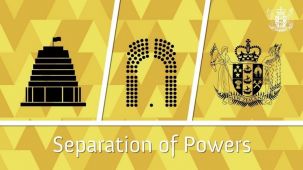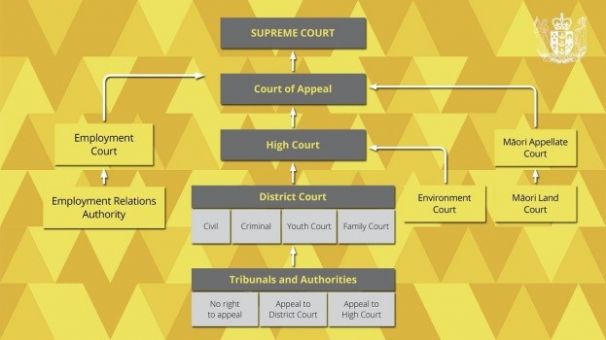The Communications Unit of the Judicial Office for Senior Courts has produced a multi-lingual video to explain the role of the Courts and the key principles of the New Zealand legal system.
The video features Chief Justice Helen Winkelmann and New Zealand’s first Māori Supreme Court Judge, Justice Joe Williams, and Judges of the Supreme Court, Court of Appeal, High Court and District Court. It is produced in English, te reo Māori and Mandarin with English subtitles. It is hoped that the video will make the courts more accessible, and better understood, by the increasingly diverse communities they serve.
The nine-minute video talks about the separation of powers – the three branches of government, the executive, the legislature and the judiciary. The executive is lead by the Prime Minister, the legislature is Parliament and where laws are made and the judiciary which is the judges who make court decisions and uphold the laws.

The video explains how the separation of powers provides checks and balances on how the government exercises power. Neither the government, nor parliament can influence how a judge decides a case. Every judge in New Zealand takes an oath of independence to promise that they will not be influenced by anyone and they will decide cases impartially. This means that a judge may focus only on the facts and the law, making decisions in the interests of justice.
The four-tier structure of the court is explained, with details of the roles and functions of specific courts.

The appeal process to the Court of Appeal and the Supreme Court is included in the video, explaining when, how and why an appeal court might hear an appeal.
The court process in relation to criminal cases is discussed, including the presumption of innocence and the right to a fair trial which is affirmed in the New Zealand Bill of Rights Act. Other rights discussed include the right of the accused to be present at the trial, to present a defence and to question witnesses. Many factors are relevant to fair trails including whether a person is mentally fit to stand trial, whether they are able to instruct a lawyer or whether they understand English. The views of the victim are also considered.
The courts are open to the public and their work is transparent. Access is only limited when it is necessary to protect a victim or to ensure a fair trial. Anyone can view a case and the media is encouraged to report on a case.
Finally, viewers are encouraged to visit the courts in action, or to find out more by visiting their website.
The full interviews of Justice Thomas, Justice Dobson, Justice O’Regan, Judge James Johnston and the Registrar of the Court of Appeal can be found here.
